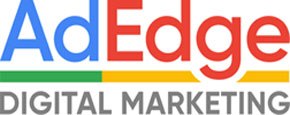AB testing is one of the best ways to determine which marketing, promotional, and online strategies work best for your business. AB testing is an experiment where two or more variants of a page are shown to users, and statistical analysis determines which variation performs better. To optimize search ad copy, banner ad graphics, website calls-to-action, or newsletter subject lines use this method. There’s virtually no limit to what can be tested. As testing becomes part of a company’s culture, more insights are gained into what works and what doesn’t.
How to run an AB test:
First, figure out if you want to run an on-site or off-site test. On-site tests refer to any sales-related systems of your website including forms, landing pages, buttons, and other calls to action. Off-site tests are basically any other marketing outside of your website. Off-site tests can involve broad tests such comparisons in performance between channels of marketing such as social media ads vs. traditional banner ads or paid search performance on Google vs. Bing. Off-site testing can get pretty granular including the color of buttons in your banner campaigns, banner ad sizes, the length of email subject lines, and performance differences between various demographic groups or personas.
You can test subject line copy, length, urgency, personalization, etc. Differences in open rate and post-click performance help to determine winning subject line attributes to use in the future. Next, identify Key Performance Indicators (KPIs) by listing all the variables that can be tested, narrow them down to the ones that directly impact performance. KPIs often directly affect a business’s bottom line. For example, if you’ve decided to drill into your email performance, some attributes to test in addition to the subject line are the headline, copy, design, length, and calls to action. In-depth testing takes time and each variable needs to be tested independently in an AB test, but the results are usually worth it.
What Should I Test?
Just because you can test anything and everything when it comes to digital marketing, that doesn’t necessarily mean you should. A better strategy is to focus on components that you think will have the biggest impact on your results. Some elements worth testing on a website, for example, are headings, content, downloads, and calls to action. In the case of ad testing, if you can prove that one format performs better than another that format becomes the “control” and that winner gets the lion’s share of ad spend. Same with email. Paid search ads are simpler and easier to test. Start by testing the title, copy, offer, call to action, and/or vanity URL.
How Long Will It Take?
Whenever conducting a test, it’s important to allocate enough time to capture enough data so that your results are conclusive. How much time really depends on what you are testing. For example, testing for how long a user spends on a website takes far fewer visits than testing for lead- or sales-conversions. Don’t test too much at once too fast or you risk not knowing what is impacting performance. At AdEdge, we take a minimum of one month to run a test or longer for smaller sample sizes.
Can I Test Multiple Things At Once?
Yes! But it is then a multivariate test which is much more complex. Multivariate testing involves more than one ad attribute that is tested with various headlines and call-to-actions. If you’re new to testing, start by keeping it simple with one AB test at a time. AB testing refers to testing one attribute at a time. For example, if you want to test four different ad headlines, that’s actually considered an AB test.
If you would like some advice on which digital marketing channels are likely to perform best in your industry or if you’d like some insights on the best attributes to test and whether to use A/B testing or multivariate testing, feel free to schedule a free consultation with one of our digital marketing experts.



